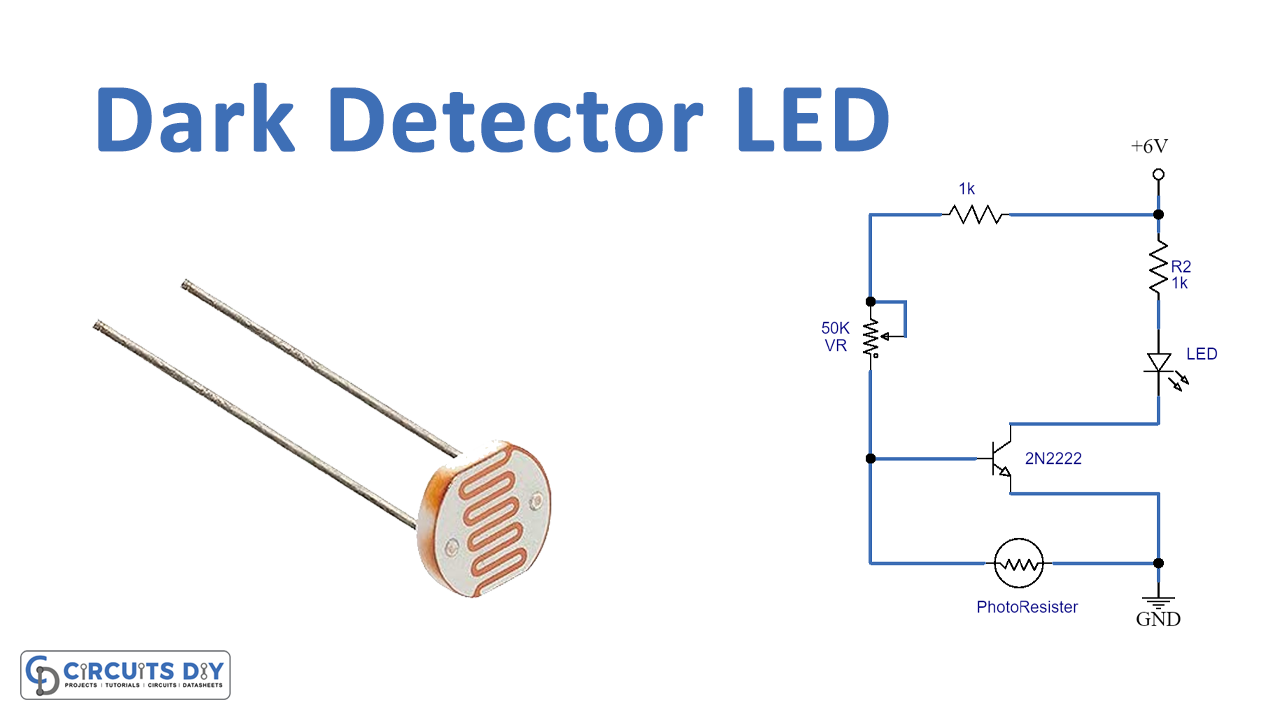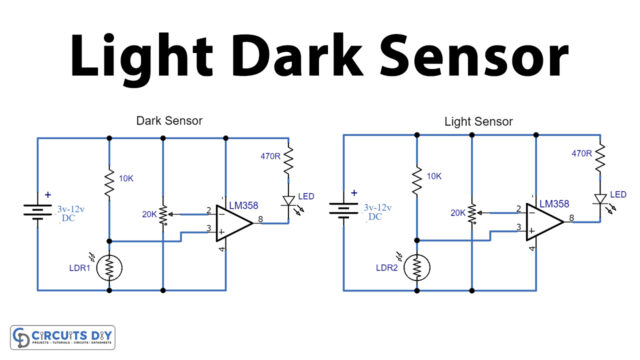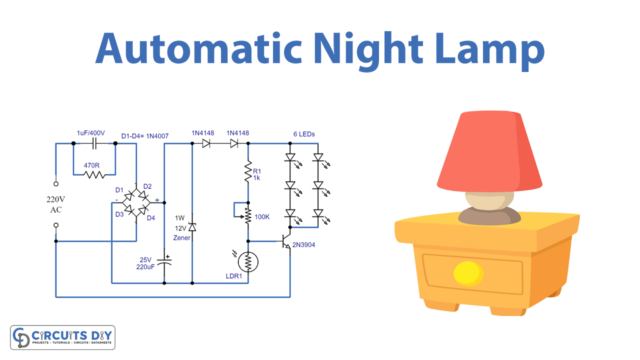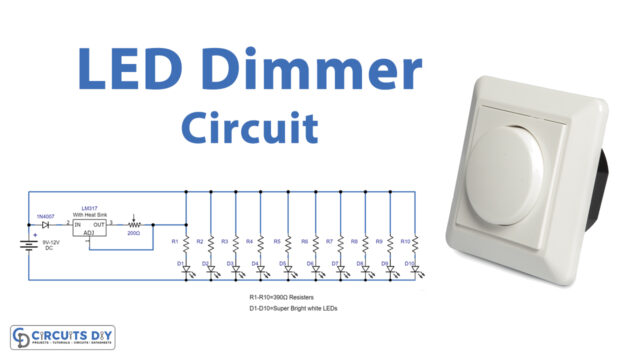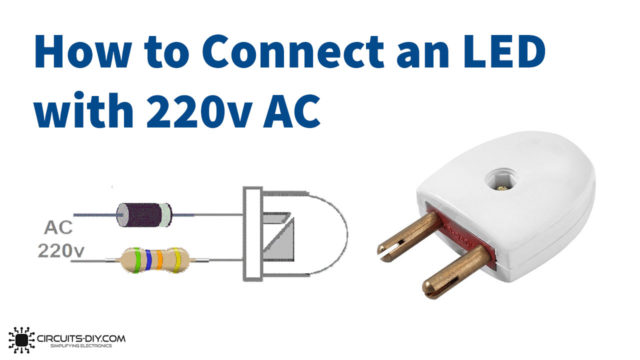You have heard of light detector LED circuits, today we are going to explain how you can make a Dark detector LED circuit. Using this circuit you can control LED based on the intensity of light around the circuit.
The main principle of this circuit is based on the working of an LDR ( Light Dependent Resistor). The resistance of LDR is inversely proportional to the intensity of light i.e., maximum in dark and minimum when there is some light falling onto it. In this circuit, LDR will sense the light and dark conditions, and the transistor is used for the switching purpose. This circuit will automatically control and turn LED on-off, depending on the brightness of ambient light. The sensitivity or brightness at which the LED lights up can be controlled by using a potentiometer (variable resistor)
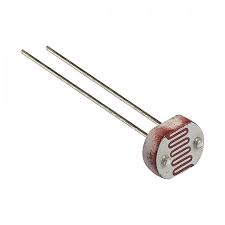
Hardware Components
The following components are required to make a Dark Detector LED Circuit
| S.no | Components | Value | Qty |
|---|---|---|---|
| 1. | Transistor | 2N2222 | 1 |
| 2. | Photoresistor | – | 1 |
| 3. | Variable Resistor | 50K | 1 |
| 4. | Resistor | 330Ω, 1KΩ | 1, 1 |
| 5. | Power Supply | 6V | 1 |
| 6. | LDR | – | 1 |
2N2222 Pinout
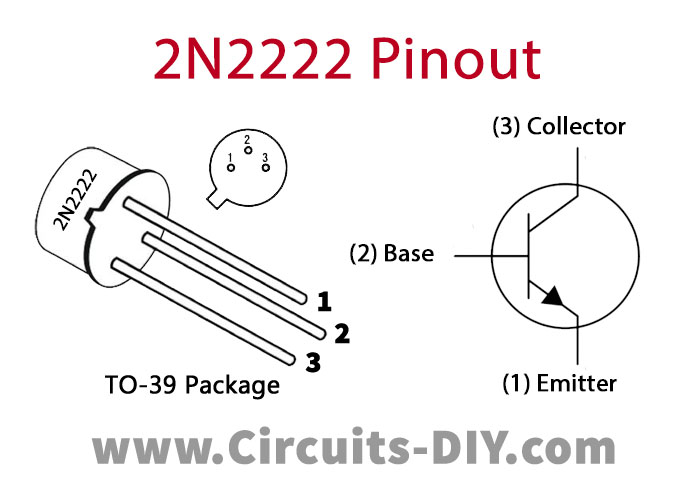
For a detailed description of pinout, dimension features, and specifications download the datasheet of 2N2222
Dark Detector LED Circuit

Working Explanation
The circuit can be operated by using four batteries of 1.5 volts. When no light falls onto the LDR its resistance will maximize and it will stop the voltage from going to the ground, the voltage will be given to the base of the transistor. So, the voltage at the base of the transistor increases when the intensity of the light is decreased, and once it gets past the minimum threshold voltage required at the base of the transistor and the LED will turn on.
We are using a variable resistor of 50K which will adjust the desired light condition on which you want your LED to light up, a resistor of 1K is used for the protection of the LDR from connecting directly to the supply when the variable resistor is at zero resistance. The 330 ohms resistor is used to provide the current required for LED

